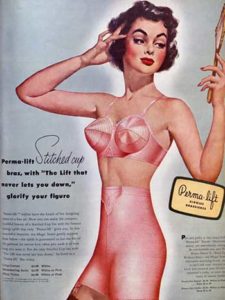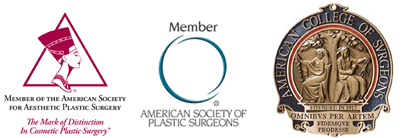Philadelphia, PA

Hanging of the breasts is medically called ptosis. It’s pronounced with a silent P. The condition comes in different degrees from minor to severe. Plastic surgeons grade it from one to three. The most severe hanging is grade three. Supportive bras are worn to lift, elevate, and support the breast. This is not new to our generation. Woman have for centuries used a variety of clothing and devices to bind, support, and elevate their breasts. This dates back over 500 years. The Minoan civilization in the 14th century depicted athletes wearing bra-like clothing. Many other cultures of antiquity have seen woman wearing some type of supportive device. The corset was the most commonly worn garment and was helpful to the stomach and the breasts. It was mainly the wealthy and higher social classes that first wore these garments. By the early 20th century, bras began to more closely resemble what they look like today. By the 1930’s, they became more mass produced with the eventual development of multi-billion dollar companies.
Factors that have been associated with ptosis of the breast and bras include exercise, pregnancy and breast feeding, weight gain and loss, muscle injury, and circulation. I will review these factors to help us gather information on whether to wear a bra or to not wear a bra. To date there is no good randomized prospective medical study to conclusively guide us. Most of the material that hits the news are poor studies on small numbers of patients that do not help us.
With most of the factors to be reviewed, it is important to understand the anatomy of the breasts. The breast is called a mammary gland because its purpose is for milk production, in addition to being a part of human sexuality. It lies on top of the pectoralis major muscle for the majority of its location on the thorax. Suspensory ligaments called Cooper’s ligaments are involved in keeping the tissues elevated and supported. These ligaments are composed of collagen and elastin fibers. Damage or aging of these ligaments are believed to be a main cause of medical ptosis.
Exercise:
When woman exercise, the breast will bounce up and down more vigorously than compared to the resting state. This puts repetitive stress on Cooper’s ligaments. These ligaments are not muscular and do not strengthen with these bouncing forces. You can not tighten them or exercise them. Like other collagenous structures in our bodies, these forces lead to stretching and damage to the ligaments. Wearing a bra is a major factor to minimize this. The support stops the repetitive stretching and pulling on the ligaments.
Conclusion: Bras should be worn whenever exercising to minimize hanging.
Pregnancy and Breast Feeding:
Pregnancy leads to hormonal changes and weight gain that causes the breasts to grow. The rapid and dramatic breast enlargement can damage suspensory ligaments by physically pulling them apart. The pregnancy is often followed by breast feeding. This causes the daily increase and decrease of the gland with milk engorgement. This repetitive cycle of bigger and smaller is detrimental to breast shape and appearance. This is another major factor leading to hanging. Two important corrective factors are to minimize excessive weight gain with pregnancy and to minimize breast feeding. These two factors will decrease the damage of extra weight pulling the ligaments and injuring the collagen fibers.
Conclusion: Bras should be worn during pregnancy and around breast feeding. Weight gain should be about 20-30 pounds and not excessive. Your OB-GYN doctor will determine the exact weight gain that is best for you. Breast feeding should not be for too long or too many months. Your Pediatrician will determine the best length of time of breast feeding.
Weight gain and loss:
Repetitive weight gain and loss can severely damage the shape and appearance of a woman’s body. The breasts often are especially injured. Severe stretching of the ligaments and skin can cause severe hanging or ptosis grade three. Stretch marks are common. Surgery is often needed to lift these breasts. The breast lift is called a mastopexy. If weight loss and gain is frequent or excessive, the breasts will almost definitely be ptotic. Bras will be beneficial by supporting the extra weight to minimize damages.
Conclusion: Bras should be worn to diminish injury for those with weight shifts.
Bras cut off circulation and weaken muscles:
These are two factors that are listed as reasons that bras are damaging and should not be worn. They simply are not true. Bras may be tight, but they essentially never cut off circulation. The plastic surgeon is an expert in breast circulation. Developing and maintaining blood flow to the breast after an augmentation or a lift is essential. The main blood supply is from branches of the internal mammary artery, that has perforators or branches to the breast. Excluding a post-operative patient who just had surgery, a bra that was cutting off circulation or blood supply is almost never a factor. If this happened, the skin would get skin blistering and skin changes if she was injuring blood flow. Even a wrong size bra will not cut off blood flow. Bras do not weaken muscles either. This is just not true. The mammary gland is not a muscle. Bra wearing has no factor on pectoralis muscle strength or the strength of other thoracic muscles.
Conclusion: Bras do not damage blood supply or muscles.
Other Factors:
Aging, sun exposure, and hard life styles are notorious factors that are bad for beauty and appearance of the breast. As we get older the suspensory ligaments fragment and have irreversible damage. This is a big factor in breast ptosis. Sun exposure and life style play additional damaging roles to a woman’s breasts. Bras can’t stop these damaging factors but they can potentially minimize them by being anti-gravity. Supporting the breast will assist the woman in decreasing the pull on the ligaments.
Conclusion: Bras benefit by minimizing the damage.
Natural History studies and Common Sense:
Sometimes a person doesn’t need to have a medical study to tell me what is best. Wearing a bra I believe makes common sense to lessen the negative factors discussed above. Natural history studies are also of benefit to guide us on the merits of bras. If we look at cultures who do not wear bras, we can assess the consequences. Think of native aborigines and we have seen pictures of the effects. National geographic photos have shown the natural appearance of breasts when bras are never worn. Severe hanging or ptosis is the norm in these cultures. In America, where most woman wear bras, the natural breast has nowhere near the same degree of hanging.
Conclusion: Bras make significant benefit when different cultures are studied.
The overall conclusion is that bras are a big help and have no harmful effects. Wearing a bra will help lessen damage to the suspensory ligaments and will give the woman a better chance of a perky elevated breast.
Contact us Today
This educational writing was written to help patients learn about breast hanging or ptosis. I am a board certified Plastic Surgeon specializing in exclusively cosmetic surgery. Please call for a complimentary consultation. I will review with you in detail your options, surgery techniques, recovery and risks.
I have offices in Chadds Ford, PA and also Wilmington and Newark DE.

